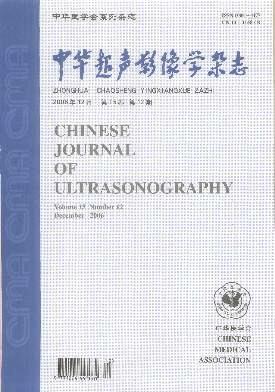经皮超声引导核心针穿刺活检和内镜下超声引导细针抽吸在胰腺肿块中的临床价值
Q4 Medicine
引用次数: 0
摘要
目的探讨经皮超声引导核心针穿刺活检(PUS-CNB)和内镜超声引导细针抽吸(EUS-FNA)治疗胰腺肿块的安全性和临床价值。PUS-CNB 82例,EUS-FNA 19例,两者均8例。术前记录病变部位和大小。病理诊断明确的标本被认为是令人满意的材料。由于穿刺过程中存在高危因素而无法穿刺的标本被视为活检不成功。所有患者均在活检后进行随访,并记录并发症。结果PUS-CNB的满意率和成功率分别为98.89%和100%,诊断准确率和假阴性率分别为97.78%和2.22%,EUS-FNA的满意率、成功率分别是96.15%和96.30%,出血和穿刺后针位处的针头转移。结论PUS-CNB和EUS-FNA是诊断胰腺良恶性病变安全有效的方法,具有较高的临床价值。合理选择EUS-FNA和PUS-CNB可以安全可靠地识别和鉴别胰腺良恶性病变。关键词:经皮超声引导下核心针穿刺活检;内镜超声引导下细针抽吸;胰腺肿块;并发症本文章由计算机程序翻译,如有差异,请以英文原文为准。
Clinical value of percutaneous ultrasound-guided core needle biopsy and endoscopic ultrasound-guided fine needle aspiration in pancreas mass
Objective
To explore the safety and clinical value of percutaneous ultrasound-guided core needle biopsy(PUS-CNB) and endoscopic ultrasound-guided fine needle aspiration(EUS-FNA) in pancreas mass.
Methods
Ultrasound-guided biopsy were performed in 109 cases who were difficult to diagnose to get specimens from the highly suspicious parts of the lesions by avoiding vessels. PUS-CNB were performed in 82 cases, EUS-FNA in 19 cases and both in 8 cases. The site and size of lesions were recorded preopeartion. Specimens with clear pathological diagnosis were considered as satisfactory materials. Specimens that were impossible to puncture due to the existence of high risk factors in the process of puncture were considered as unsuccessful biopsy. All patients were followed up after biopsy and complications were recorded.
Results
The satisfaction rate and success rate of PUS-CNB were 98.89% and 100%, the diagnostic accuracy and false negative rate were 97.78% and 2.22%. The satisfaction rate and success rate of EUS-FNA were 96.15% and 96.30%, the diagnostic accuracy and false negative rate were 80.77% and 23.81%. There were no serious complications such as pancreatic fistula, hemorrhage and needle transfer at the needle site after puncture.
Conclusions
Both PUS-CNB and EUS-FNA are safe and effective methods for the diagnosis of benign and malignant pancreatic lesions and have high clinical values. Reasonable selection of EUS-FNA and PUS-CNB can safely and reliably identify and diffentiate the benign and malignant pancreatic lesions.
Key words:
Percutaneous ultrasound-guided core needle biopsy; Endoscopic ultrasound-guided fine needle aspiration; Pancreas mass; Complication
求助全文
通过发布文献求助,成功后即可免费获取论文全文。
去求助
来源期刊

中华超声影像学杂志
Medicine-Radiology, Nuclear Medicine and Imaging
CiteScore
0.80
自引率
0.00%
发文量
9126
期刊介绍:
 求助内容:
求助内容: 应助结果提醒方式:
应助结果提醒方式:


